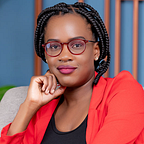An Artificial Intelligence (AI) tool with the mandate to make critical infrastructure resilient globally
Of the many unique features that distinguish Africa as the cradle of humankind is the discovery of a peculiar tool known as the ISHANGO bone. It is believed to be one of the earliest mathematical tools in existence — dating as far back as 20,000 BC — and is speculated to have been used for counting, calendaring and as a number reference table. The ISHANGO relic is proof that a highly advanced civilization existed in Africa in the years of early, modern humankind and is now for me, serving as an inspiration for our future.
It’s often true that history has a way of repeating itself, but little did I know I would be part of a team that has built a tool that so strongly speaks of my ancestors’ intelligence and correlates to one of our most important legacies. Honoring Africa’s tradition of mathematical innovation, we’ve designed a counting app for health facilities and named it ISHANGO. The app functions much like its prehistoric predecessor the ISHANGO bone — it is a portable tool to help humans keep track of things, except this time it uses the intelligence of machine learning.
The simple act of counting can be complicated — we made it easier.
Through my work with macro-eyes, I spent time with machine learning scientists developing a unique healthcare mobile app that is truly making a difference in the medical field. Currently, public healthcare workers have to track and account for every vial used throughout vaccination campaigns. The traditional method used involves counting the vials one by one. With vaccines administered to millions of people, manually keeping track of what has been used is a time-consuming and logistical nightmare for overstretched health workers. The ISHANGO mobile app effectively takes care of all of that with the click of a button. Healthcare workers can take a photo of their supplies, whether it’s vaccines or contraceptives, and the ISHANGO app uses AI to instantly make a fully accurate count, online or offline.
The benefit to this is no lost counts. It introduces new efficiencies that have never existed before in health. I believe it’s truly as revolutionary as our original ISHANGO bone in the positive impact it can have on the way we do things. The ISHANGO app helped me develop as a software engineer.
One of the most extraordinary things about the ISHANGO app isn’t just that it can count photographed objects without inaccuracies, but it runs its core AI within the app on a device. This means that all mathematical functions happen inside the phone — no wifi connection is needed — this can be critical during extended power outages and in remote operating areas where novel solutions for health are most needed.
I’ve been a software engineer for several years. This was my first time working on an app with artificial intelligence as its central functionality. With zero AI knowledge or experience, I needed to understand the nitty-gritty of the entire development process. I joined online communities on how best to build machine learning mobile apps. I learned the interface design process and how to implement them for Android users. Then how to integrate the mobile app with the machine learning model tool. This was a learning curve for me — it required acquiring and collecting data similar to what our application will be capturing. I witnessed firsthand the importance of human involvement with an AI app. We collected data from users — data needed to train the machine learning model and heavily relied on their feedback to not only modify our goals and the overall user experience but refine the machine model to perform the task intended.
We can truly say that there’s no artificial intelligence without human intelligence.
Through the experience of building ISHANGO, I am ecstatic to have achieved this level of understanding of AI. It has developed me as an engineer and I’ve in turn helped extend macro-eyes’ capabilities.
Growing up with a mother who has made great milestones in the health sector as a medical doctor, I was inspired by her to make my own mark as a woman in science. Now I can say that I am achieving this by building solutions that can help our society today.
AI for Africa
As a mobile developer, you sometimes want to see what is out there and if you can improve it, yet I could not find anything similar to ISHANGO. I found that most of the successful apps using AI in their core development process, especially within Africa, are within the banking sector. This is a true opportunity to carve out an entirely new technological niche that helps our society overall.
Just like effective mobile banking technology leapfrogged the West and successfully set root in Africa first; I hope to see the use of AI in more healthcare apps developed first within the African market and follow the same path to catapult Africa straight into the heart of the fourth industrial revolution.
I am honoured to have interacted with AI — commonly known as artificial intelligence, but for me, in this particular case, I call it ancestral intelligence.
Special thanks to Ruth Mkala for the hard work in bringing this together.
Originally published at https://www.macro-eyes.com on March 30, 2021.
